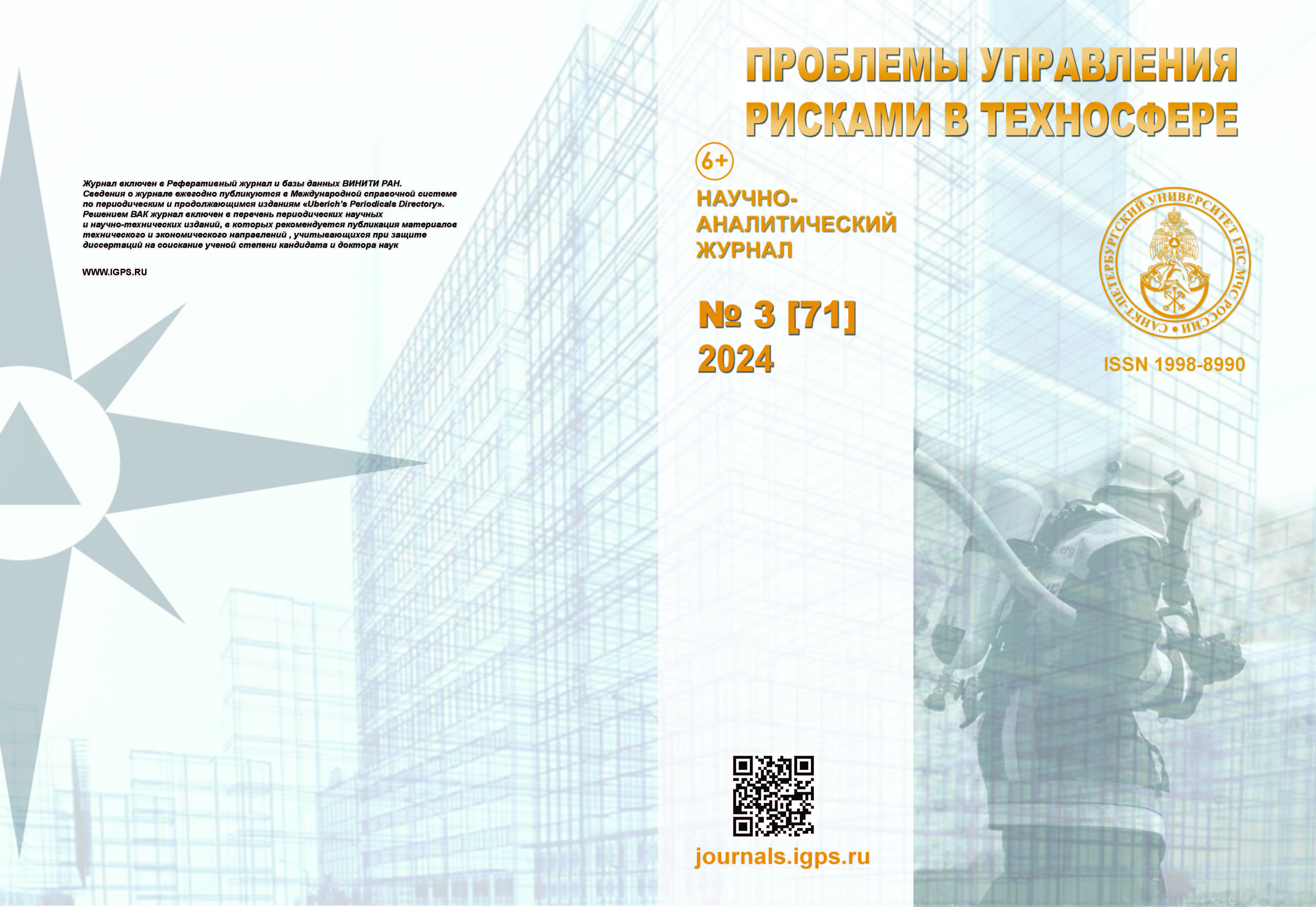Russian Federation
Russian Federation
Russian Federation
UDC 502/504
This study examines the carbon footprint of various construction materials, focusing on embodied carbon and its role in achieving sustainable construction. The objective is to examine carbon footprint as an indicator of sustainable development. To assess it, the authors employed a scenario-based approach grounded in the concept of dynamic balance. The authors quantitatively determine greenhouse gas emissions at different stages of the project's life cycle. Risk scenarios are developed, and their parameters are defined. Recalculating the scenario using foamed glass, best practices, and other factors reveals a 56 % reduction in carbon footprint. This represents a substantial step towards environmental sustainability, aligning with global best practices for low-carbon construction.
low-carbon construction, risk assessment, foam glass, comparative analysis, scenario approach, carbon footprint, risk management, environmental safety, environmental management
1. Carbon footprint accounting across the construction waste lifecycle: A critical review of research / L. Yuan [et al.] // Environmental Impact Assessment Review. 2024. Vol. 107. P. 107551.
2. Nekotorye vyzovy i vozmozhnosti dlya Rossii i regionov v plane global'nogo trenda dekarbonizacii / D.K. Nurgaliev [i dr.] // Georesursy. 2021. T. 23. № 3. S. 8–16.
3. Gell M. Dynamic carbon footprinting // International Journal of Green Economics. 2008. № 2. P. 269–283.
4. Ecological footprint / M. Wackernagel [et al.]; Fath B. (ed.) // Encyclopedia of Ecology, 2nd ed. Oxford: Elsevier, 2019. Vol. 4. P. 270–282.
5. Ecological footprint: Refining the carbon footprint calculation / M. Mancini [et al.] // Ecological Indicators. 2016. № 61. P. 390–403.
6. Green housing evaluation through carbon footprint dynamic model: Questioned the urban policy sustainability / M.S. Dewi [et al.] // Procedia – Social and Behavioral Sciences. 2016. Vol. 227. P. 317–324.
7. Vakulenko N.V., Nigmatullin R.I., Sonechkin D.M. K voprosu o global'nom izmenenii klimata // Meteorologiya i gidrologiya. 2015. № 9. S. 89–97.
8. Perevedencev Yu.P., Auhadeev T.R., Shantalinskij K.M. Prostranstvenno-vremennaya izmenchivost' atmosfernogo davleniya i temperatury vozduha v Severnom polusharii // Rossijskij zhurnal prikladnoj ekologii. 2016. № 3. S. 3–9.
9. Wallace J.M., Thompson D.W.J. Annual models and climate prediction // Physics Today. 2002. Vol. 56. Iss. 2. P. 28–33.
10. Korolev I.S. Global'noe poteplenie i energeticheskij perekhod (vneshneekonomicheskij aspekt) // Analiz i prognoz. Zhurnal IMEMO RAN. 2022. № 2. S. 13–22.
11. IPCC, 2021: Climate Change 2021: The Physical Science Basis: Contribution of Working Group I to the Sixth Assessment Report of the Intergovernmental Panel on Climate Change. Cambridge, UK; New York, US: Cambridge University Press, 2021. 2338 p.
12. IPCC. Rukovodyashchie principy nacional'nyh inventarizacij parnikovyh gazov MGEIK. 2006. URL: https://www.ipcc-nggip.iges.or.jp/public/2006gl/russian/pdf/3_Volume3/V3_2_Ch2_Mineral_Industry.pdf (data obrashcheniya: 25.08.2024).
13. Ob utverzhdenii metodicheskih rekomendacij po provedeniyu dobrovol'noj inventarizacii ob"ema vybrosov parnikovyh gazov v sub"ektah Rossijskoj Federacii: rasporyazhenie Minprirody Rossii ot 16 apr. 2015 g. № 15-r. URL: https://eipc.center/pdf/analitic/raspr_minprir_ros_16_04_2015_n_15.pdf?ysclid=lu3fkg4npv830667889 (data obrashcheniya: 25.08.2024).
14. Ob utverzhdenii metodik kolichestvennogo opredeleniya ob"emov vybrosov parnikovyh gazov i pogloshchenij parnikovyh gazov: prikaz Minprirody ot 27 maya 2022 g. № 371. URL: https://carbonreg.ru/pdf/Obshchie NPA/Prikaz Minprirody RF ot 27.05.2022 N 371 (data obrashcheniya: 25.08.2024).
15. Ob utverzhdenii metodicheskih ukazanij i rukovodstva po kolichestvennomu opredeleniyu ob"ema vybrosov PG organizaciyami, osushchestvlyayushchimi hozyajstvennuyu i inuyu deyatel'nost' v Rossijskoj Federacii: prikaz Minprirody Rossii (Ministerstvo prirodnyh resursov i ekologii Ros. Federacii ot 30 iyunya 2015 g. № 300). URL: https://www.garant.ru/products/ipo/prime/doc/71183290/?ysclid=m0ae1sibfw327430708 (data obrashcheniya: 25.08.2024).
16. Smirnova E., Larionova Yu. Problem of environmental safety during construction (analysis of construction impact on environment) // E3S Web of Conferences. 2020. Vol. 164. P. 07006.
17. Shulver I., Slade S. Application of environmental impact assessment to the control of emissions from flat glass furnaces / J. Kieffer (ed.) // A Collection of Papers Presented at the 60th Conference on Glass Problems (Ser.: Ceramic Engineering and Science Proceedings). Westerville, OH: The American Ceramic Society, 2008. Vol. 21. Iss. 1. P. 169–182.
18. Quantification of carbon emission of construction waste by using streamlined LCA: A case study of Shenzhen, China / H. Wu [et al.] // Journal of Material Cycles and Waste Management. 2015. Vol. 17. P. 637–645.
19. Wiedmann T., Minx J. A definition of 'carbon footprint’ / C.C. Pertsova (ed.) // Ecological Economics Research Trends. Hauppauge, NY: Nova Science Publishers, 2008. P. 1–11.
20. Antony C. What is a reasonable commute time and distance to work in 2024? URL: https://hqhire.com/reasonable-commute-to-work/ (data obrashcheniya: 25.08.2024).
21. Design of an efficient insulation system for a house in Zaouiat Sidi Abdeslam using Binayate software / M. Saidi [et al.] // 7th International Renewable and Sustainable Energy Conference (IRSEC). Agadir, Morocco. Danvers, MA: IEEE 2019. P. 471–476.






